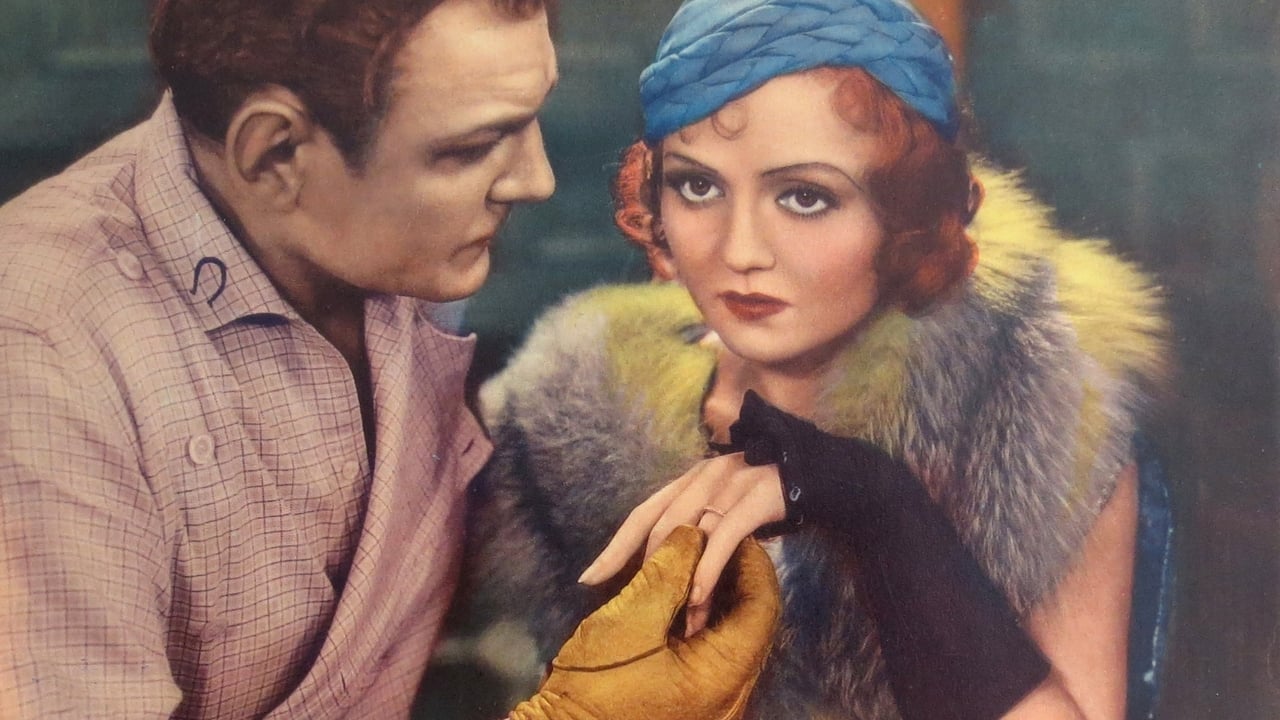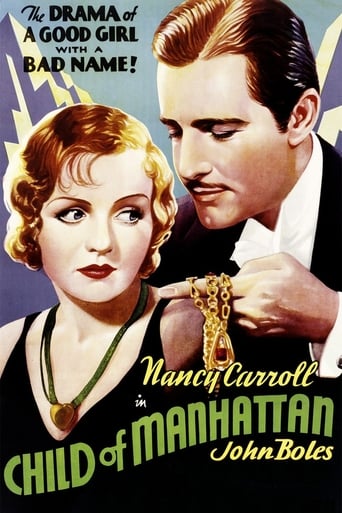



Truly the worst movie I've ever seen in a theater
I saw this movie before reading any reviews, and I thought it was very funny. I was very surprised to see the overwhelmingly negative reviews this film received from critics.
View MoreThe movie's not perfect, but it sticks the landing of its message. It was engaging - thrilling at times - and I personally thought it was a great time.
View MoreIf you're interested in the topic at hand, you should just watch it and judge yourself because the reviews have gone very biased by people that didn't even watch it and just hate (or love) the creator. I liked it, it was well written, narrated, and directed and it was about a topic that interests me.
View MoreHere's an interesting old movie, one of the earliest examples of a formula that would later define a whole genre, more a whole industry. Man meets girl and immediately falls in love. There is an event followed by a misunderstanding that send them apart. They rejoin at the end. Later this ending would require a public avowal, something missing here.This is also an example of somethings that did not stick. Deep in the depression, many movies featured the ultra rich - people who just seemed to have money for no reason. Because this was before comical prudery changed films starting with the Code, we have the situation that guy knocks up the girl.But I found it interesting for yet another reason. Movies from this era were far more willing to question gender roles than now is the case. Oh, today we worry about professions and opportunity. I'm talking about what it means to be a woman or man. In this film, we have our girl, with appealing innocence. She is the child of Manhattan, with clear immigrant, lower class heritage. Both she and the rich guy are noble people, but she far more. The film is about her decisions.Sturges has taken the time to introduce four older women. They are shoehorned in and have nothing at all to do with the story; they are there only to show strong women, sometimes frustrated strength. There is the older woman at the dance hall where our girl works, who is much loved as she takes care of her girls. We have the aunt of our rich guy who is shown as a forceful nut job.Then we have the girl's mother. We learn a lot about her past and values. She turns her daughter out on the street when she gets pregnant by her then boyfriend. This woman slaps her adult kids, hard. We spend the final third of the movie with the girl's aunt, something of a world traveller, a poor person's playgirl. She drinks too much but always seems to be on top of things.Four strong women form the situation-of-womanhood in which we interpret our girl's life. Nothing like that today in mainstream films.Ted's Evaluation -- 2 of 3: Has some interesting elements.
View MoreDon't let the wedlock baby fool you. This is a version of the fairy-tale Cinderella story popular with Depression era audiences of the time. It comforts folks with the idea that rags- to-riches lightning may strike them if they just get noticed by a benevolent rich person, in this case John Boles with the rather double-edge name of "Vanderkill". What's suggested is that rescue from desperate economic conditions lies with joining established wealth instead of joining with other desperate folks to improve the common economic condition. I don't know how the screenplay compares with Sturges' stage play, but what's there on the screen looks processed in typical Hollywood fashion.I realize this kind of perspective is unwelcome to most viewers who simply want to be entertained in engaging fashion. Certainly Nancy Caroll does that with a winning performance as the down-trodden girl. Her sheer spunk in the early scenes carries the movie, at the same time I couldn't help thinking how much her big eyes, high cheek bones and flattened hair-do resemble the popular Betty Boop character of the time. Too bad the rest of the cast doesn't come up to her level, especially Buck Jones' Panama Kelly whose unbelievably gallant nature helps produce the fairy tale outcome. Note also, how actual Depression era conditions are not allowed to intrude on the enclosed world of the lovers. To be fair, that may simply have resulted from a tight budget. But if so, the constraints help produce what appears to be the desired overall effect.Whatever the movie's internal qualities, the relevance of the underlying message to that historical period needs to be pointed out. Because no matter how much we may wish otherwise, history has a nasty habit of repeating itself.
View MoreI saw this movie this morning by accident. I love 30s movies for the clothes, the beauty of which hit me during the "first" mini era. I was a teenager and I had never seen such gorgeous clothes.The movie is predictable, but Nancy Carroll is adorable and I can see what her appeal was. With that pretty face and hair, she would have absolutely no chance of getting any job as an actress today, in this world of gaunt, giraffe-like women-men. Too bad we don't have any visual differences among the "leading actresses of today", all those interchangeable bland flat-haired blondes.Those clothes are wonderful. Too bad we'll never see their like again -- after all, how can anyone be attractive wearing anything other a mini or jeans?Hey, wasn't Buck Jones handsome! I won't contrast him with our "leading men" today. I leave that up to you.
View MoreIt isn't easy to track down this movie, but it's worth the effort if you're a Preston Sturges fan and would like to see what his work looked like early on, when he was still in the process of finding his voice. Sturges first made his name as a writer in 1929, with his smash hit Broadway comedy Strictly Dishonorable. Unfortunately, he went on to produce three flops in a row after that, before leaving New York for Hollywood. There he regained his bearings and ultimately became a master of sophisticated farce comedy -- but for the movies, not the stage. Child of Manhattan was the second of Sturges' three Broadway failures, though according to the various books about the author it wasn't really such a terrible flop: it ran for 87 performances, which wasn't so bad in those days. The reviews were poor however, and the stage run didn't recoup its investment. After the show closed the play's primary financial backer sold the material to Columbia Pictures, but for convoluted reasons Sturges didn't earn a penny from the movie version. Still, watching the results today we can see that the experience wasn't a total loss for the author, for it's clear that he used this somewhat rickety vehicle to explore themes he would develop more fully later on. His fans will recognize and enjoy the comic passages in the dialog, which suggest a workshop version of Sturges' great screenplays of the '40s, delivered by embryonic versions of the eccentric characters he would later polish to perfection.Child of Manhattan tells the story of Madeleine McGonegal (Nancy Carroll), a taxi dancer who works at a dime-a-dance club called Loveland, which happens to occupy land owned by one of New York's wealthiest men, Paul Vanderkill (John Boles). Vanderkill is a middle-aged widower and an absentee landlord where the club is concerned, but one evening he visits to see if the place is as wicked as its reputation suggests. He meets Madeleine and finds her strangely innocent and charming, despite the tawdry setting. He romances her, buys her expensive clothes, then sets her up in an apartment as his mistress. You know you're watching a Pre-Code movie when an extramarital sexual relationship is presented in such a straightforward fashion. Vanderkill buys his new girlfriend lavish gifts in a sequence that must have represented a wish fulfillment fantasy for Depression era viewers, and which contrasts sharply with Madeleine's harsh encounters with her shanty Irish family, who bluntly express their disapproval of her new mode of life.When Madeleine gets pregnant she's apologetic, which I found confusing, frankly; why was it HER fault? (Doesn't it take two?) It's briefly implied that Paul might arrange to have the pregnancy terminated, but instead he offers marriage on condition that it remain a secret. The plot takes several more twists from that point forward, but let it suffice to say that although the tone of the story grows darker, Sturges manages to perk things along with amusing character turns by familiar supporting players Jesse Ralph, Luis Alberni, and Tyler Brooke. Brooke is especially funny in a scene that is the film's comic highlight, Paul and Madeleine's trip to a fancy clothier's on Fifth Avenue called Madame Dulcey's. Brooke, who plays the proprietor of the shop, leaves no doubt about his sexual orientation as he waxes eloquent on the "too too divine" outfits he has in stock, outdoing himself with a description of a $12,000 chinchilla coat as "silver gray, rippling like a river in the midst of early morn -- and so virginal!" (Like I say, it's Pre-Code.) Nancy Carroll gives an excellent performance as Madeleine, at once both comic and poignant, reaching an especially impressive dramatic peak during a hospital sequence. It's a memorable turn, and makes me wonder why her career slowly fizzled out after brief stardom in the early '30s. Leading man John Boles is handsome but somewhat wooden, and too young to play Vanderkill; it's too bad Warner Baxter or Warren William weren't used instead. The most surprising casting choice is that of Nancy's spurned suitor, an Okie blessed with the unlikely name of Panama Canal Kelly. This role is played by cowboy star Buck Jones with requisite sincerity, but his dialog is full of awkward, pseudo-homespun sayings that would make any genuine Okie wince.In this early effort Sturges explores the balance of power in man- woman relationships as he would later, with more sophistication and polish, in The Lady Eve, The Palm Beach Story, and Unfaithfully Yours. Fans of those films will want to seek this one out, for although it's not entirely successful this movie is surprisingly enjoyable in its own right, considerably boosted by a sparkling performance by the unjustly neglected Nancy Carroll.P.S. Since writing this review I've managed to locate a copy of the script for the stage version of Child of Manhattan. The basic plot is the same, and several of the play's scenes are repeated almost verbatim in the movie. In the play we see more of Madeleine's family, but most of that material was dropped from the film, and so was a sequence involving an eccentric room-service waiter. It's a funny scene, but it doesn't advance the story. Over all, I'd say this is a case where the screen version is an improvement over the source material. The movie is more tightly focused and satisfying than the stage play.
View More